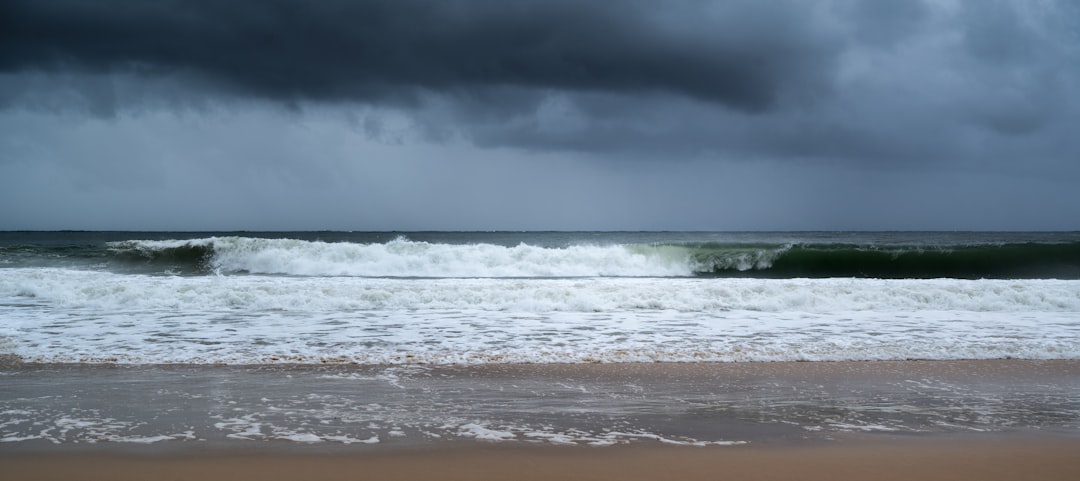Tropical Storm Duo May Protect — here’s what’s new, why it matters, and what to watch next.
Tropical Storm Duo May Protect Carolinas from Severe Weather
At a Glance
In an unusual meteorological event, two tropical storm systems are forming in the Caribbean, with a potential interaction that could influence weather patterns along the southeastern United States, particularly the Carolinas. This rare occurrence may provide a protective effect, mitigating the risk of damage from either storm.
Background & Timeline
Tropical storms are a common concern for coastal regions, especially during hurricane season, which runs from June 1 to November 30. The Atlantic hurricane season is known for its unpredictable weather patterns, but the current situation involving two systems—Tropical Storms Ophelia and Peter—has garnered attention due to their unusual proximity.
According to the National Hurricane Center (NHC), both storms formed in September 2025. By September 27, Ophelia was located approximately 300 miles east of the Bahamas, while Peter was situated around 400 miles southeast of the coast of Florida. This close proximity is significant because interactions between tropical storms can lead to unexpected outcomes, including potential shielding effects for nearby coastal areas.
Historically, such interactions have been rare but can produce substantial changes in storm trajectories and intensities. In this case, forecasters suggest that the two systems might influence each other, creating a dynamic that could prevent one or both storms from making a direct impact on the Carolinas.
What’s New
As of September 28, weather models are indicating that Tropical Storm Ophelia may drift northward, while Tropical Storm Peter is projected to follow a path to the northwest. The interaction between these two storms is expected to create a sort of barrier that could protect the Carolinas from the brunt of their winds and rainfall.
Meteorologist Jennifer Collins noted, “The interaction between these systems can lead to a change in their paths. If they work together rather than independently, they may actually lessen the impact on coastal areas.”
Additionally, the NHC has been closely monitoring wind patterns and atmospheric conditions that could lead to the formation of a high-pressure system. This system could further shield the Carolinas by redirecting storm paths away from the coastline.
Why it Matters
The potential shielding effect of these tropical storms is crucial for the Carolinas, particularly in light of the recent weather patterns that have caused significant damage in previous hurricane seasons. The region has experienced hurricanes that resulted in flooding, power outages, and extensive property damage. If Ophelia and Peter can interact positively, it may lead to reduced storm intensity and less rainfall, providing much-needed relief to the area.
“It’s a scenario that meteorologists don’t see often, but when it does happen, it can be beneficial,” said Dr. Mark Thompson, a climate scientist. “The Carolinas have been on edge during the hurricane season, and this interaction could be a silver lining.”
The significance of this weather event extends beyond immediate protection. It provides an opportunity for scientists and meteorologists to study tropical storm interactions, which could lead to better forecasting methods in the future. Understanding how these storms can influence each other may improve preparedness for future hurricane seasons.
What to Watch Next
As the situation continues to evolve, residents of the Carolinas are advised to stay informed through local weather updates and advisories from the National Hurricane Center. Monitoring the progress of both storms will be critical in assessing their impact on the region.
Key aspects to watch include:
- Storm Trajectories: Continuous updates on the paths of Ophelia and Peter will help gauge potential threats to the Carolinas.
- Wind and Rainfall Forecasts: Changes in the storms’ winds and rainfall predictions will be essential in determining the level of preparedness needed.
- Emergency Preparedness: Local authorities may issue emergency alerts, and it’s important for residents to have plans in place.
FAQ
Q: What are Tropical Storm Ophelia and Tropical Storm Peter?
A: They are two tropical storm systems currently forming in the Caribbean, with potential impacts on the southeastern United States.
Q: How can two tropical storms affect each other?
A: When two storms are close together, they can interact in ways that alter their paths and intensities, sometimes leading to protective effects for nearby areas.
Q: Should residents of the Carolinas be concerned?
A: While there is potential for protection from damage, it is still important to monitor the storms closely and prepare as necessary.
Q: What should residents do to prepare?
A: Stay informed through local weather reports, have an emergency plan in place, and gather supplies in case of severe weather.
Q: Why is this interaction unusual?
A: Such interactions between tropical storms are rare, and their outcomes can be unpredictable, making this situation noteworthy for meteorologists.
Takeaways
The interaction between Tropical Storms Ophelia and Peter presents an intriguing meteorological scenario that could potentially shield the Carolinas from severe weather damage. As these systems develop, ongoing monitoring will be vital to ensure the safety and preparedness of residents. While the situation is promising, it serves as a reminder of the unpredictable nature of tropical storms and the importance of being vigilant during hurricane season.
Sources & Credits: Reporting synthesized from multiple reputable outlets and official releases.
Read our related coverage for more on Tropical Storm Duo May Protect.
For context and confirmations, see reputable wires like Reuters or AP News.
Source: Original Source. Reporting synthesized from multiple reputable outlets and official releases.
For deeper analysis on Tropical Storm Duo May Protect, explore more reports and explainers on Insurance Rate Expert.













